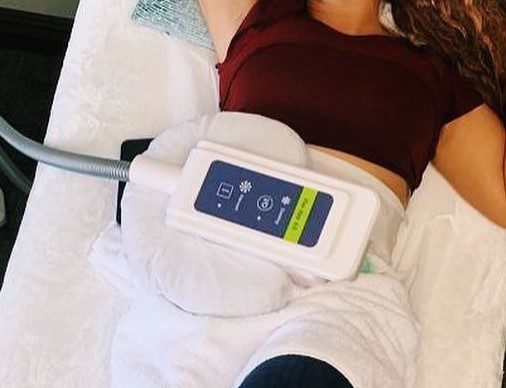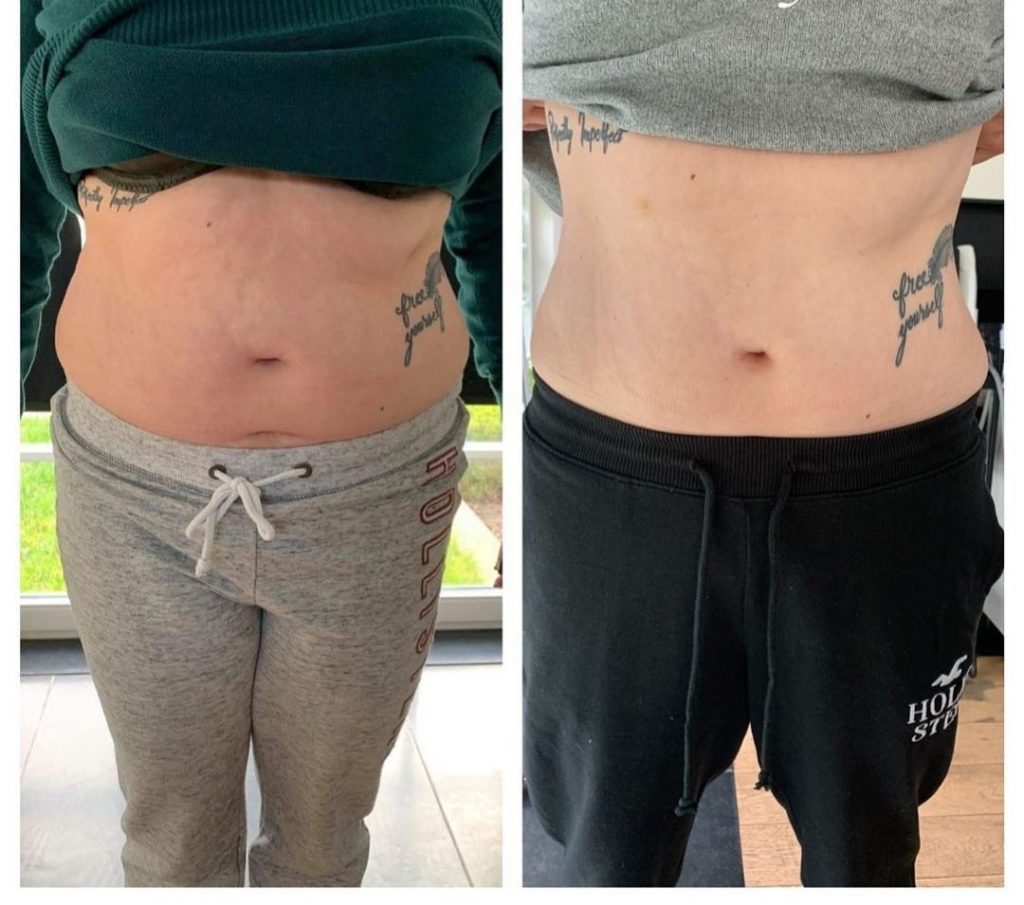What is cryolipolysis?
Cryolipolysis, commonly referred to as fat freezing, is a nonsurgical fat reduction procedure that uses cold temperature to reduce fat deposits in certain areas of the body. The procedure is designed to reduce localized fat deposits or bulges that do not respond to diet and exercise. It is not intended for people who are obese or significantly overweight.

What areas of the body are best suited for cryolipolysis?
The Food and Drug Administration has approved cryolipolysis to treat fat deposits beneath the chin, upper arms, inner and outer thighs, abdomen, hip/flank (“love handles”), upper back (“brassiere rolls”), lower back, and underneath the buttocks.
Studies have shown an average fat reduction of between 15 and 28 percent at around 4 months after initial treatment. However, you may begin to notice changes as early as 3 weeks after treatment. Dramatic improvement is noticed after about 2 months.
RISKS / BENEFITS
There are many advantages to cryolipolysis:
- No surgical incision is required.
- It is a low risk procedure. There is no risk of infection.
- The procedure can be performed on an outpatient basis.
- Patients do not need to be sedated or anesthetized before undergoing the procedure.
- More than one area of the body may be treated in a single session.
- Most people can resume their normal daily activities immediately after treatment.
- The procedure can be performed on people of all ages.
- There is no damage to nerve fibers, blood vessels, muscles, or lasting damaging to skin in the treatment area.
- Fat cells that have been damaged or destroyed are permanently removed from the body.
What are the disadvantages of cryolipolysis?
Disadvantages of cryolipolysis include:
The procedure is recommended only for people who are in good general health with no neurologic or orthopaedic problems and who are looking for “spot” fat reduction in specific areas on the body. Cryolipolysis is not recommended for people who are significantly overweight or obese.
- There is a risk that the skin surface may be irregular/not smooth after healing.
- More than one session may be needed to achieve a person’s desired results.
- If more than one treatment sessions is needed, the next session can’t be performed until 6 to 8 weeks after the first session. This is because it can take this long for damaged fat cells to be eliminated from the body.
- One rare side effect that may occur is paradoxical adipose hyperplasia. In this rare condition, the size of fat cells increases after cryolipolysis. Men and people of Hispanic ethnicity are more likely to experience it.
Other conditions that pose a risk include
- Pregnancy or breast-feeding
- Nerve disorders, such as diabetic neuropathy
- Inflammatory skin disorders
- Skin conditions caused by immune system disorders, such as eczema or psoriasis
How many cryolipolysis treatment sessions are typically needed?

